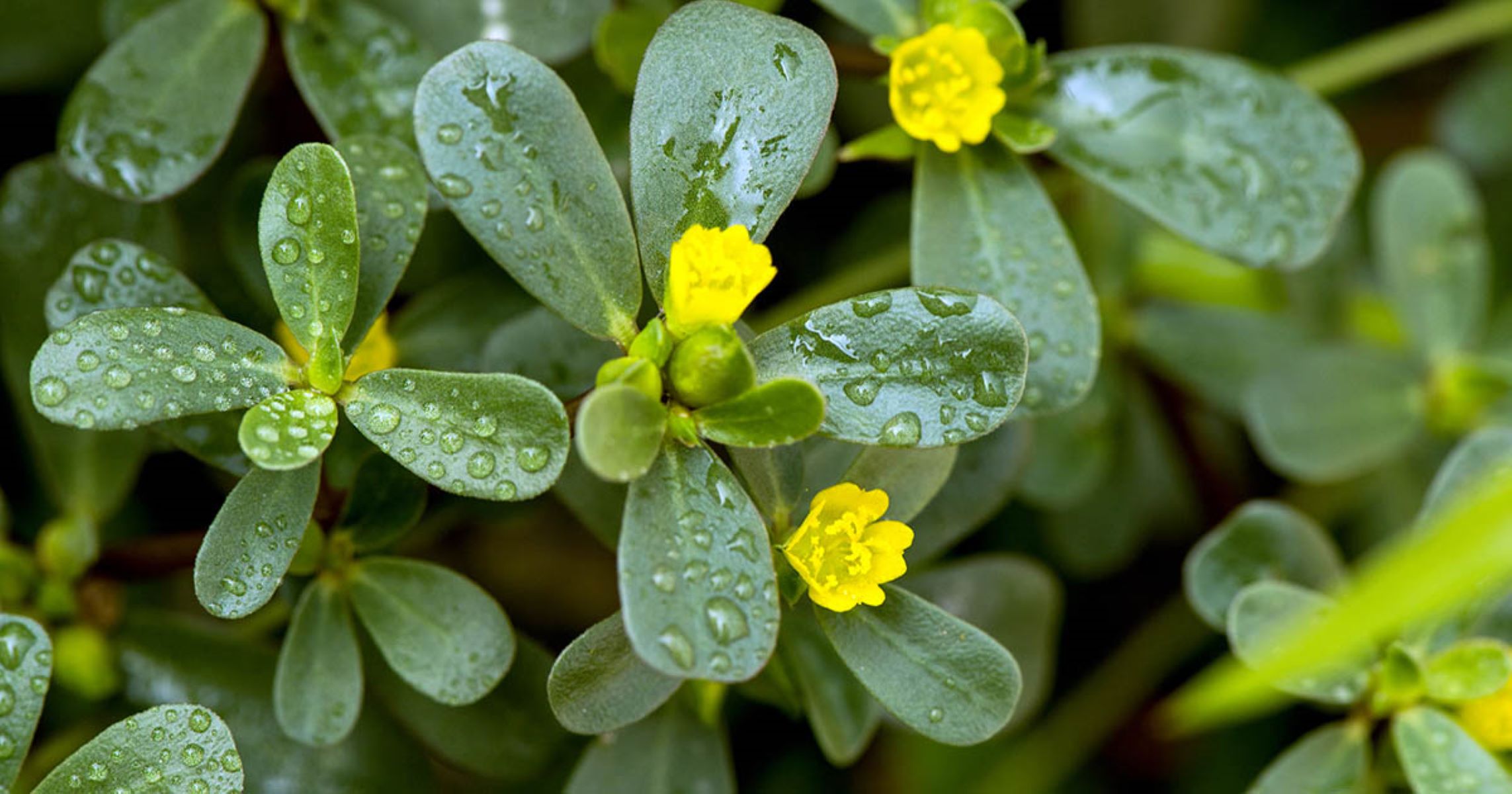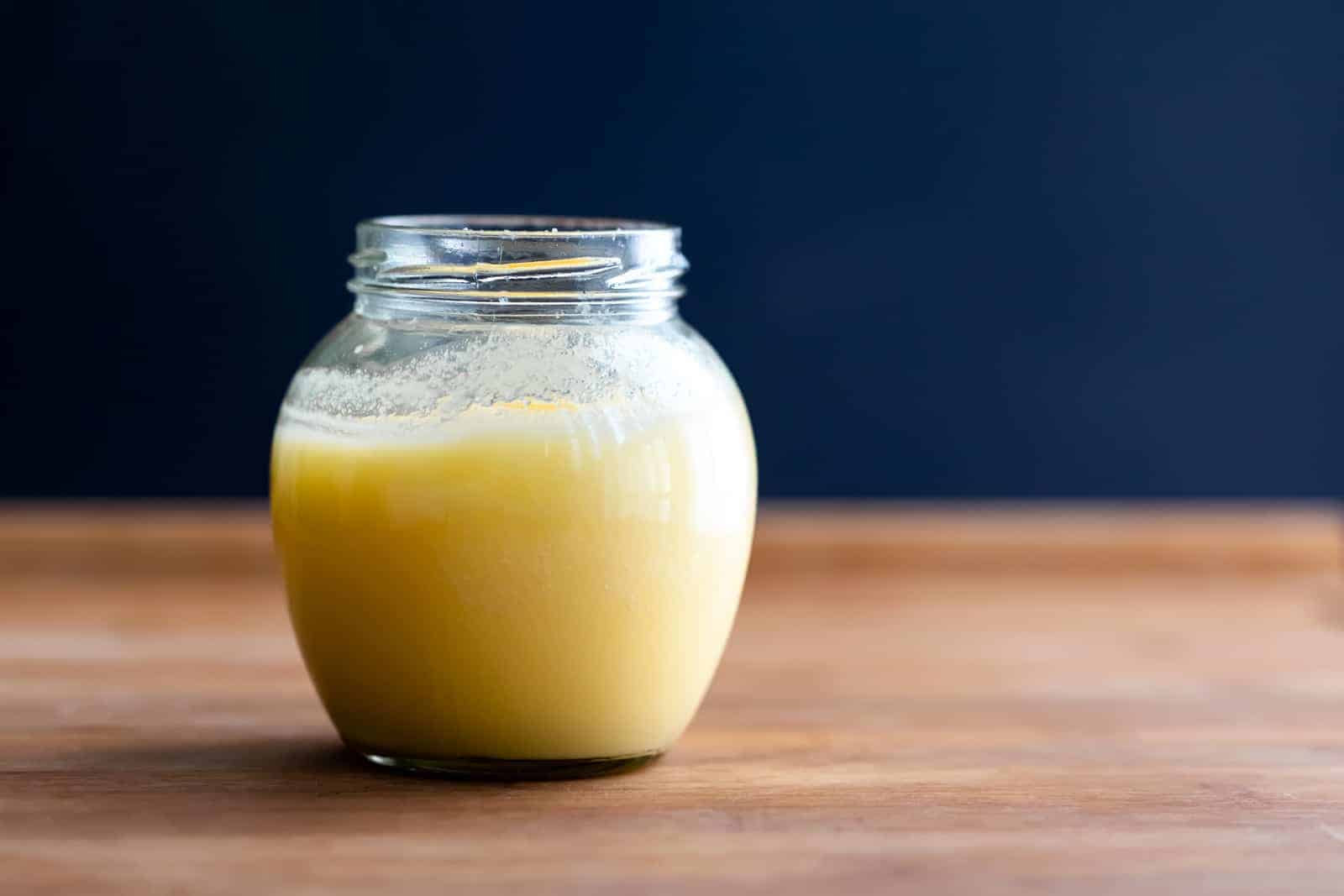

Articles
How To Store Purslane
Modified: October 20, 2024
Learn how to properly store purslane with these helpful articles. Keep your purslane fresh and ready to use for your next meal.
(Many of the links in this article redirect to a specific reviewed product. Your purchase of these products through affiliate links helps to generate commission for Storables.com, at no extra cost. Learn more)
Introduction
Purslane is a versatile and nutrient-rich plant commonly used in culinary dishes around the world. With its succulent leaves and lemony flavor, purslane is not only delicious but also loaded with health benefits. Whether you have a bountiful harvest of purslane from your garden or you want to make the most of store-bought purslane, it is important to learn how to store it properly so that you can enjoy its freshness and flavor in the long term.
In this article, we will explore various methods for storing purslane, including refrigeration, freezing, drying, preserving in oil, and pickling. Each method has its own advantages and considerations, so you can choose the one that best suits your needs and preferences. By following these storage techniques, you can extend the shelf life of purslane and have it readily available for use in your favorite recipes.
Key Takeaways:
- Store purslane to enjoy its fresh flavor and health benefits year-round. Choose from refrigeration, freezing, drying, oil preservation, or pickling methods to extend its shelf life and add a unique twist to your culinary creations.
- Select the freshest purslane and store it properly to maintain its flavor, texture, and nutritional value. Whether you refrigerate, freeze, dry, preserve in oil, or pickle purslane, these methods ensure long-term availability and creative meal planning.
Read more: How To Store Store-Bought Bread
Why Store Purslane?
Purslane is a highly perishable plant that starts to lose its flavor and texture soon after harvest. By storing purslane properly, you can extend its shelf life and preserve its nutritional value. Here are some key reasons why you should consider storing purslane:
- Long-Term Availability: Purslane has a relatively short growing season and may not be readily available throughout the year. By storing purslane, you can enjoy its fresh flavor and health benefits even when it is out of season.
- Convenience: Storing purslane allows you to have it on hand whenever you need it without the need for frequent trips to the grocery store or farmer’s market.
- Budget-Friendly: When purslane is in season, it is abundant and often more affordable. By storing purslane, you can take advantage of lower prices and save money in the long run.
- Creative Meal Planning: Having stored purslane opens up a world of possibilities for meal planning. Whether you want to incorporate it into salads, stir-fries, soups, or sandwiches, having purslane readily available allows you to experiment with different recipes.
- Nutritional Value: Purslane is packed with nutrients, including vitamins A, C, and E, as well as omega-3 fatty acids. Storing purslane properly helps to retain these valuable nutrients, ensuring that you reap their health benefits when you consume the plant later on.
By storing purslane, you can enjoy its unique flavor, versatility, and health benefits long after its growing season has ended. Let’s explore the different methods for storing purslane to ensure that it remains fresh, flavorful, and nutritious.
Choosing Fresh Purslane
When it comes to storing purslane, selecting the freshest and highest-quality plants is essential. Here are some tips to help you choose fresh purslane:
- Look for vibrant leaves: Opt for purslane with bright green leaves that are firm and crisp to the touch. Avoid any plants with wilted, yellowed, or discolored leaves, as they may not be as fresh.
- Check the stems: The stems of fresh purslane should be firm and moist. Avoid any plants with dry, shriveled, or slimy stems.
- Inspect for pests: Take a close look at the purslane to ensure there are no signs of insect infestation or damage. Avoid plants with holes, webs, or other indications of pests.
- Avoid wilting: Choose purslane that appears fresh and perky. Avoid any plants that appear wilted or limp, as they may have been harvested some time ago.
- Consider organic options: If possible, opt for organic purslane to minimize exposure to pesticides and chemicals. Organic purslane tends to be fresher and have a higher nutritional value.
By carefully selecting fresh purslane, you can ensure that you are starting the storage process with the best possible quality. Remember to handle the purslane gently to avoid bruising the delicate leaves, as this can affect its flavor and texture. Once you have chosen the freshest purslane, it’s time to consider the storage methods to maintain its freshness and flavor for as long as possible.
Storing Fresh Purslane
To keep fresh purslane at its peak, it is important to store it properly. Here are some methods for storing fresh purslane:
- Refrigeration: The most common method for storing fresh purslane is refrigeration. Start by gently rinsing the purslane under cold water to remove any dirt or debris. Pat it dry with a clean towel or paper towel to remove excess moisture. Place the purslane in a plastic bag or a container lined with a dry paper towel to absorb any moisture. Seal the bag or container and store it in the vegetable crisper drawer of the refrigerator. Fresh purslane can typically be stored in the refrigerator for up to 5-7 days.
- Water Storage: Another way to store fresh purslane is by placing the stems in a container filled with water. Fill a glass or a jar with enough water to cover the stems, like how you would store fresh flowers. Cover the leaves loosely with a plastic bag or place a plastic wrap over the top to retain moisture. Change the water every 1-2 days to keep it fresh. This method can help keep the purslane hydrated and extend its shelf life for a few more days.
- Keep It Dry: It is important to keep the purslane dry during storage to prevent moisture buildup and spoilage. Excess moisture can cause the leaves to become slimy and degrade the freshness. Check the storage container regularly and remove any accumulated moisture to maintain the quality of the purslane.
- Use airtight containers: If you’re using a plastic bag or a container to store the purslane, make sure it is airtight to prevent the entry of air, which can accelerate the wilting process.
- Do not wash before storing: Avoid washing the purslane before storing it. The added moisture can promote spoilage and make the leaves more susceptible to degradation. It is best to wash the purslane just before using it.
By choosing the right storage method and following these tips, you can maximize the shelf life of fresh purslane and maintain its flavor, texture, and nutritional value. Now, if you find yourself with an abundance of purslane or want to preserve it for an extended period, you can consider freezing or drying methods to store purslane for even longer.
Freezing Purslane
Freezing purslane is an excellent method to preserve its freshness for an extended period of time. Here’s how you can freeze purslane:
- Prepare the purslane: Start by rinsing the purslane under cold water to remove any dirt or debris. Shake off any excess water and pat it dry with a clean towel or paper towel.
- Blanching: Blanching helps to preserve the color, texture, and flavor of purslane. Bring a pot of water to a rolling boil and add the purslane. Let it blanch for about 1-2 minutes, then transfer it to an ice bath to quickly cool it down and stop the cooking process. Drain the purslane thoroughly.
- Portion and pack: Divide the blanched and drained purslane into portion sizes that you are likely to use in future recipes. You can put them into individual freezer-safe bags or containers. Squeeze out as much air as possible and seal them tightly.
- Label and freeze: Label the bags or containers with the date and contents. Place them in the freezer, making sure they are stored flat to save space. Ideally, purslane can be stored in the freezer for up to 6 months.
When you’re ready to use the frozen purslane, simply remove the desired portion from the freezer. Thaw it in the refrigerator overnight or add it directly to your cooking process without thawing, depending on the recipe requirements. Frozen purslane may become slightly softer after thawing, but it will still retain its flavor and nutritional value.
Note that freezing purslane may cause a slight change in texture, as the leaves may become slightly softer. Therefore, it is recommended to use frozen purslane in cooked dishes rather than raw salads, as the texture may be less crisp. Freezing is a great option if you have a surplus of purslane and want to enjoy it throughout the year, even when it is out of season.
Store purslane in a plastic bag in the refrigerator. Make sure to remove any excess moisture before storing to prevent it from becoming soggy. It should stay fresh for up to a week.
Read more: How To Store Basil From Grocery Store
Drying Purslane
Drying purslane is an effective method for preserving it for long periods without the need for refrigeration or freezing. Here’s how you can dry purslane:
- Harvest and clean: Harvest fresh purslane leaves, ensuring they are free from dirt and debris. Rinse the leaves under cold water and gently pat them dry with a clean towel or paper towel.
- Air drying: The traditional method of drying purslane is to air dry it. Bundle the purslane leaves together, tying the stems with a string or using a rubber band. Hang the bunches upside down in a well-ventilated space with low humidity. Make sure the leaves are not crowded together to promote air circulation.
- Drying rack: Alternatively, you can use a drying rack or a mesh tray to dry purslane. Lay the clean purslane leaves in a single layer on the rack or tray, allowing for proper airflow on all sides.
- Speed drying: If you want to expedite the drying process, you can use a dehydrator or an oven with a low temperature setting. Arrange the purslane leaves on the dehydrator trays or on a baking sheet lined with parchment paper. Set the dehydrator temperature to around 95°F (35°C) or the oven temperature to the lowest setting, with the door slightly ajar to allow moisture to escape. Check regularly to ensure the leaves do not burn or become overheated.
- Wait for complete drying: Let the purslane leaves dry completely until they are crisp and brittle. This may take several days to a couple of weeks depending on the drying method and environmental conditions.
- Store dried purslane: Once fully dried, remove the purslane leaves from the drying surface and crumble them into smaller pieces or grind them into a powder using a mortar and pestle or a spice grinder. Store the dried purslane in an airtight container, away from heat and sunlight, ideally in a cool pantry or cupboard.
Dried purslane can be used as a flavoring agent in soups, stews, sauces, and spice blends. It adds a unique tangy flavor to dishes. To rehydrate dried purslane, simply soak it in water for a few minutes before adding it to your recipe. Dried purslane can be stored for up to a year, retaining its flavor and nutritional value.
Drying purslane is an excellent option if you have an abundance of fresh purslane and want to enjoy it throughout the year. It also concentrates the flavors, making it a versatile ingredient that can be used in various dishes.
Preserving Purslane in Oil
Preserving purslane in oil is a wonderful way to store and enjoy its fresh flavor over an extended period. The process involves infusing the purslane with oil, which enhances its taste and allows for various culinary applications. Here’s how you can preserve purslane in oil:
- Harvest and clean: Harvest fresh purslane leaves, ensuring they are clean and free from any dirt or debris. Rinse the leaves under cold water and pat them dry with a clean towel or paper towel.
- Blanching (optional): While blanching is optional, it can help preserve the color and texture of the purslane leaves. Bring a pot of water to a rolling boil and briefly blanch the purslane leaves for about 1-2 minutes. Transfer them to an ice bath to cool them down quickly, then pat them dry.
- Prepare the oil: Choose a flavorless oil with a high smoke point, such as olive oil or sunflower oil. Place the oil in a saucepan and heat it over low heat until it reaches a gentle simmer. Do not let the oil boil or smoke.
- Infuse the purslane: Add the purslane leaves to the warm oil, ensuring they are fully submerged. Use a spoon or a small strainer to gently push the leaves down into the oil. Allow the purslane to infuse in the oil for at least 10-15 minutes, or until it reaches the desired flavor intensity.
- Transfer to storage container: Once the purslane has infused into the oil, use tongs or a slotted spoon to transfer the leaves to a sterilized jar or airtight container. Pour the infused oil over the purslane, ensuring it covers the leaves completely.
- Seal and store: Seal the jar or container tightly and store it in a cool, dark place, such as a pantry or cupboard. The preserved purslane in oil can last for several weeks to several months, depending on the oil used and storage conditions.
Preserved purslane in oil can be used in various dishes, such as salads, pasta, roasted vegetables, or spread onto bread. The oil not only imparts a unique flavor but also preserves the purslane, allowing you to enjoy its freshness and nutritional benefits in your cooking.
Note: It’s important to keep in mind that storing purslane in oil creates an anaerobic environment, which can potentially lead to the growth of harmful bacteria like botulism. To prevent this, make sure to sterilize the storage container before use, keep it refrigerated, and consume it within a reasonable time frame.
Pickling Purslane
Pickling purslane is a delightful way to preserve its fresh taste and create a tangy condiment that can be enjoyed for months. The pickling process enhances the flavor of purslane and adds a zesty twist to your dishes. Here’s how you can pickle purslane:
- Harvest and clean: Harvest fresh purslane leaves, ensuring they are clean and free from any dirt or debris. Rinse the leaves under cold water and pat them dry with a clean towel or paper towel.
- Prepare the brine: In a saucepan, combine equal parts water and vinegar. Add salt, sugar, and any desired spices or herbs to the mixture. Bring the brine to a boil, stirring until the salt and sugar are fully dissolved. Let the brine cool completely.
- Prepare the jars: Sterilize glass jars or containers by placing them in a pot of boiling water for a few minutes or running them through a dishwasher cycle. Allow the jars to cool down before using them.
- Pack the purslane: Pack the cleaned purslane tightly into the sterilized jars. Add any additional flavorings, such as garlic, chili flakes, or dill, to the jars.
- Pour in the brine: Pour the cooled brine over the purslane in each jar, ensuring that the brine fully covers the leaves. Leave a small headspace at the top of the jar.
- Seal and refrigerate: Seal the jars tightly with their lids and place them in the refrigerator. Allow the purslane to pickle for at least a week before consuming for optimal flavor. The pickled purslane can be stored in the refrigerator for several months.
Pickled purslane can be used as a flavorful addition to salads, sandwiches, wraps, or served as a tangy accompaniment to meat and cheese platters. The pickling process adds a delightful tartness to the purslane, making it a versatile condiment that complements a variety of dishes.
As an alternative to vinegar-based pickling, you can also explore lacto-fermenting purslane, which involves using a saltwater brine and naturally occurring lactobacillus bacteria to pickle the plant. This method results in a tangy fermented pickle that offers additional health benefits due to the presence of probiotics.
Experiment with different flavors and spices to create a pickled purslane that suits your taste preferences. Pickling purslane allows you to enjoy its unique flavor and nutritional benefits all year round, adding a delightful twist to your culinary creations.
Conclusion
Knowing how to properly store purslane is essential for preserving its freshness, flavor, and nutritional value. Whether you have a surplus of purslane from your garden or want to make the most of store-bought purslane, there are various methods available to help you store it for long-term use.
Refrigeration is the most common method for storing fresh purslane. By keeping it in the refrigerator, you can extend its shelf life by up to a week. Water storage can also be an option, allowing the purslane to remain hydrated for a few extra days.
If you have a larger supply of purslane, freezing it is a great option. Blanching the purslane before freezing helps retain its color and texture. Frozen purslane can be stored for up to 6 months and can be used in various cooked dishes.
Drying purslane is an ideal choice for long-term preservation. Air drying or using a dehydrator can allow you to enjoy dried purslane in a powdered or crumbled form for up to a year. Dried purslane can be rehydrated and used in soups, stews, and other recipes.
Preserving purslane in oil is a flavorful way to store it. Infusing purslane leaves in oil enhances their taste and creates a versatile ingredient that can be used in various dishes. Pickling purslane is another fantastic option that adds a tangy twist to the plant and creates a zesty condiment that can be enjoyed for months.
By using these storage methods, you can ensure that your purslane remains fresh, flavorful, and nutrient-rich, even when it is out of season. So whether you have a bountiful harvest or want to make the most of store-bought purslane, don’t let it go to waste. Choose the storage method that suits your needs and preferences, and enjoy the unique taste and health benefits of purslane all year round.
Frequently Asked Questions about How To Store Purslane
Was this page helpful?
At Storables.com, we guarantee accurate and reliable information. Our content, validated by Expert Board Contributors, is crafted following stringent Editorial Policies. We're committed to providing you with well-researched, expert-backed insights for all your informational needs.















0 thoughts on “How To Store Purslane”